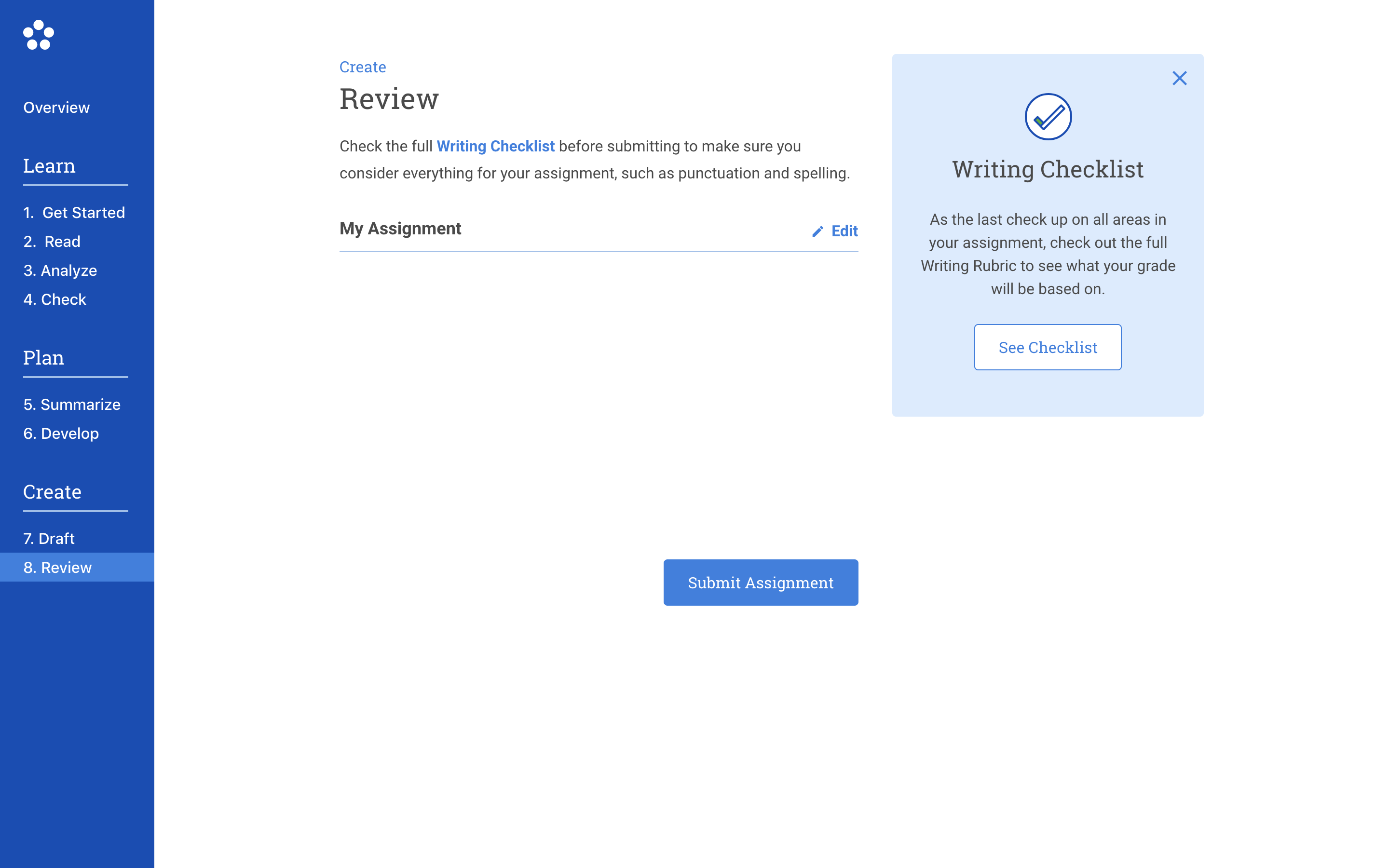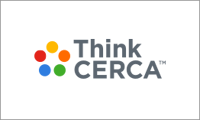Overview
ThinkCERCA’s Writing Lesson asks students to use close reading strategies and build formal pieces of writing around a given text.
These lessons are differentiated for grades 3-12, with some lessons available at the Higher Education level. Writing Lessons are differentiated within a Writing Module, allowing teachers to select a Writing Module by content area or theme and assign individual Writing Lessons by student reading level. While each Writing Lesson contains a unique writing prompt, all Writing Lessons within a Writing Module center around the same debatable Class Discussion Question.
Where to Find Writing Lessons
To access Writing Lessons, navigate to the Curriculum page. Select a Content Area or Theme, and then select a Writing Module. Upon selecting a Writing Module, you will see a differentiated Writing Lesson. By default, the appropriate lesson for your class’s grade is shown. Click “Less Challenging” or “More Challenging” to toggle through Writing Lessons within the Writing Module.
Writing Lessons can also be found via keyword search.
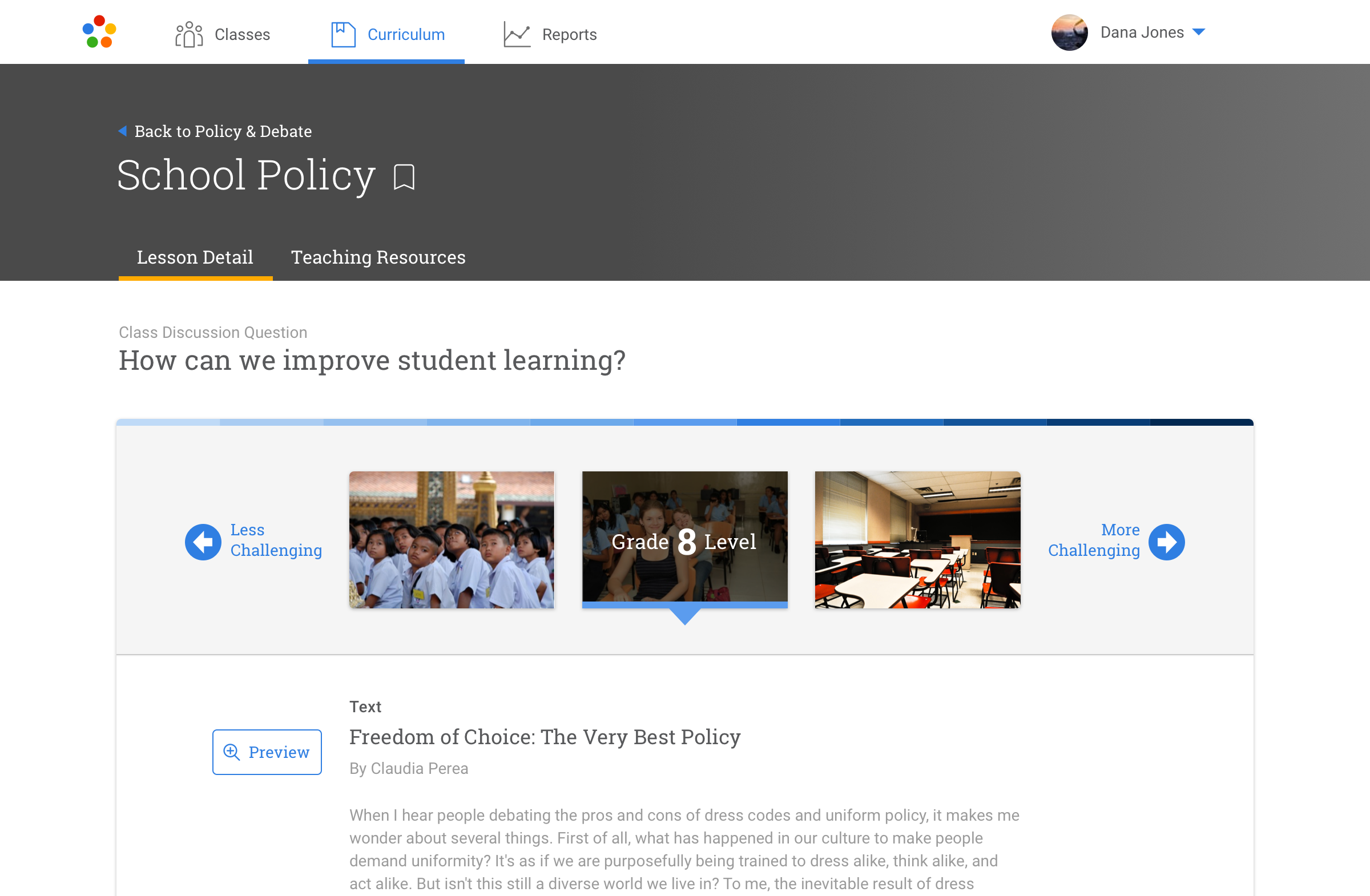
How to Assign Writing Lessons
Writing Lessons can be assigned by class, reading levels, or individual students. Learn more here.
The Writing Lesson Process for Students
When students work on a Writing Lesson, they go through a multi-step process to build their formal argument.
- Topic Overview:
At the start of a Writing Lesson, each student reads a topic overview that models the conceptual vocabulary they will need to understand the context of the argument at hand.
- Vocabulary:
Students will be provided with a list of tier 2 and tier 3 vocabulary words that are included in the topic overview and the text. Here, you can build in a vocabulary routine, such as using the frayer model or semantic webbing.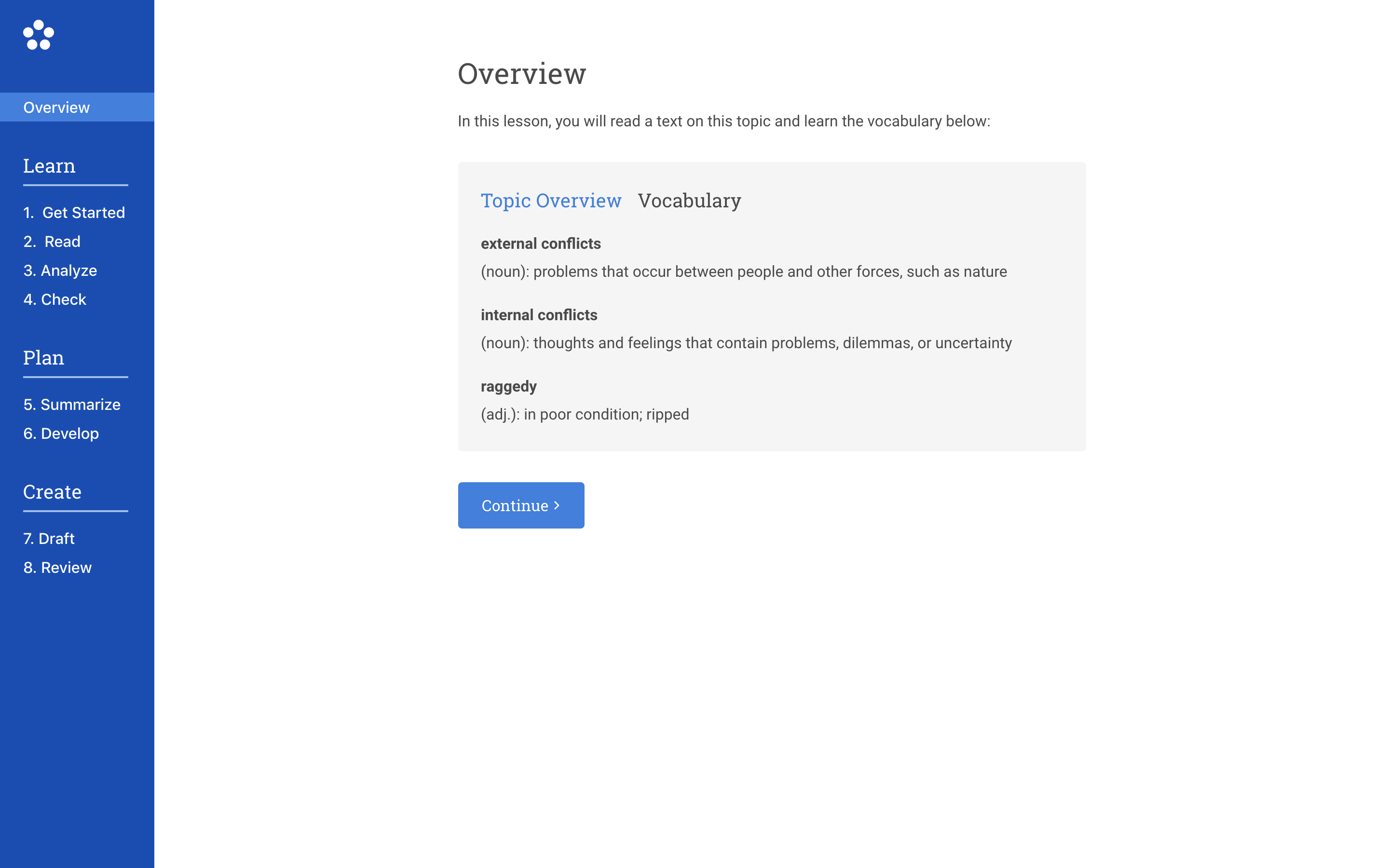
- Learn:
Next, students will learn about the objectives of the lesson in the Learn section.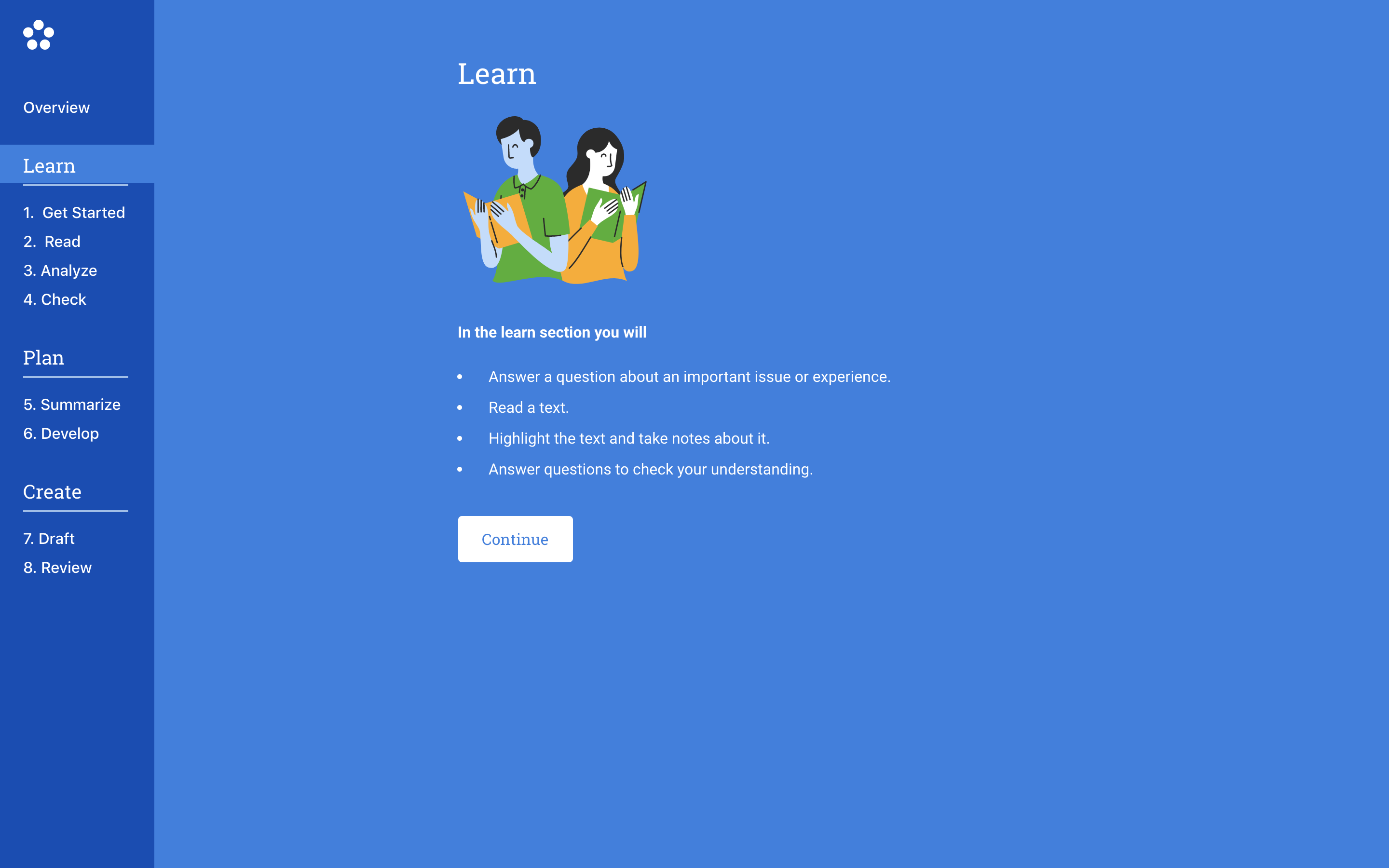
- Get Started:
Students will write a personal connection to the topic, which can later be used in their formal essay as an introduction or detailed anecdote.
At this point, students should turn and talk with a partner after writing their short response.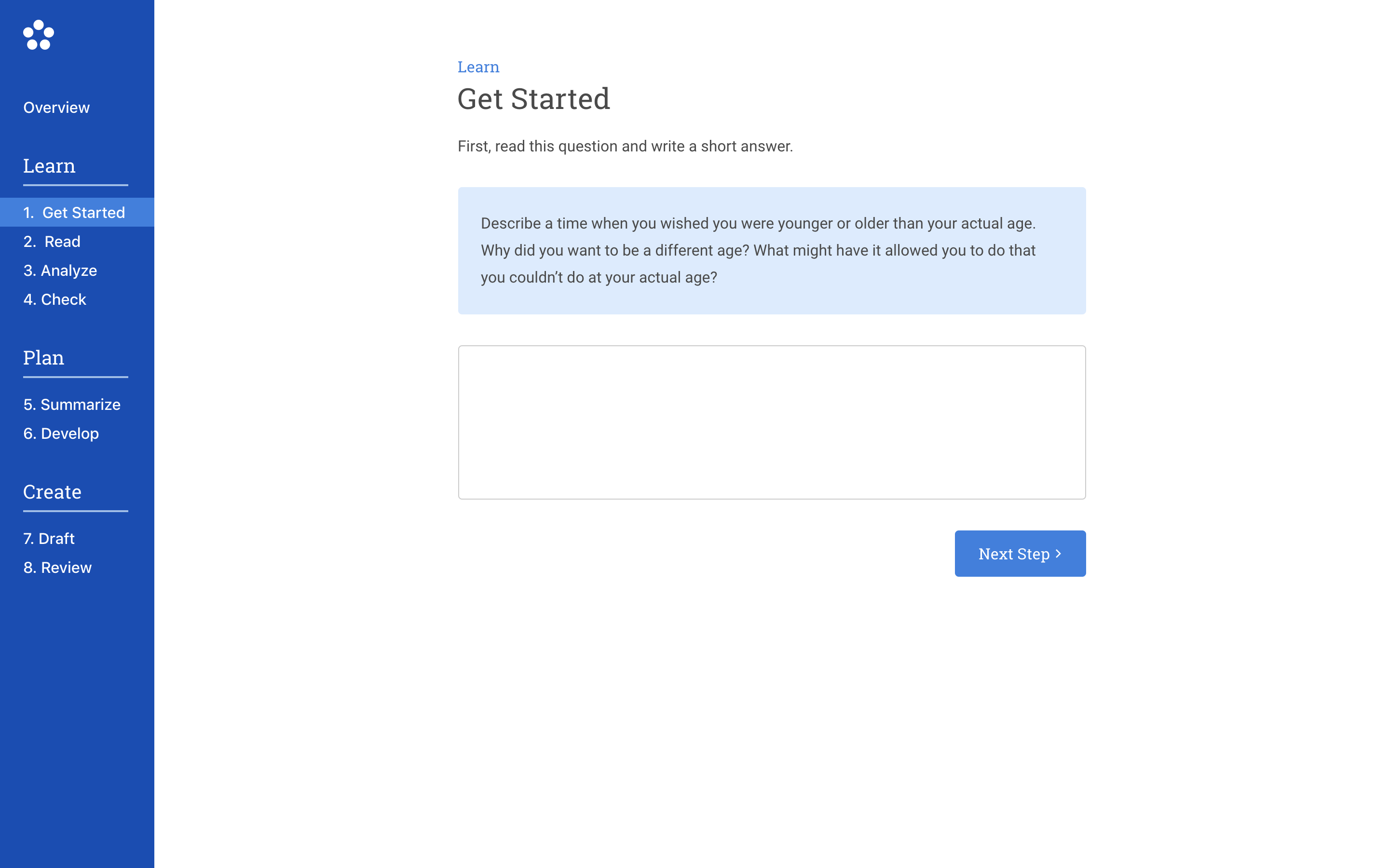
- Read:
Students read the text (with or without audio support) based on levels set in your Class Roster. Students can practice prediction strategies or/or participate in silent conversations while they read independently.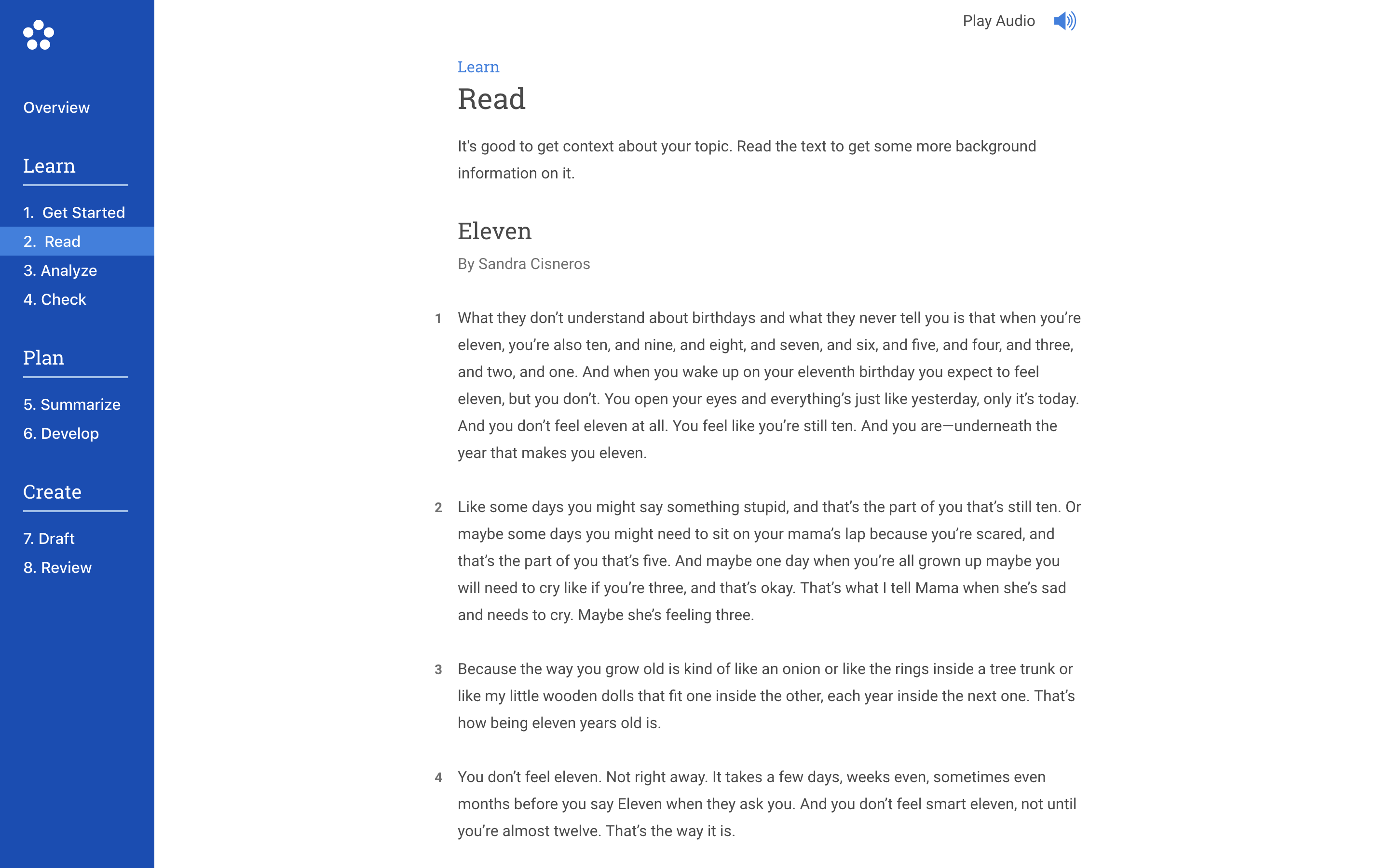
- Analyze:
Students highlight evidence from the text and annotate their reasoning. Highlighted text and annotations are then saved so that students may refer to this evidence while building their writing. Once students practice analyzing independently, teachers can put students into pairs or small groups to collaborate to find evidence and reasoning.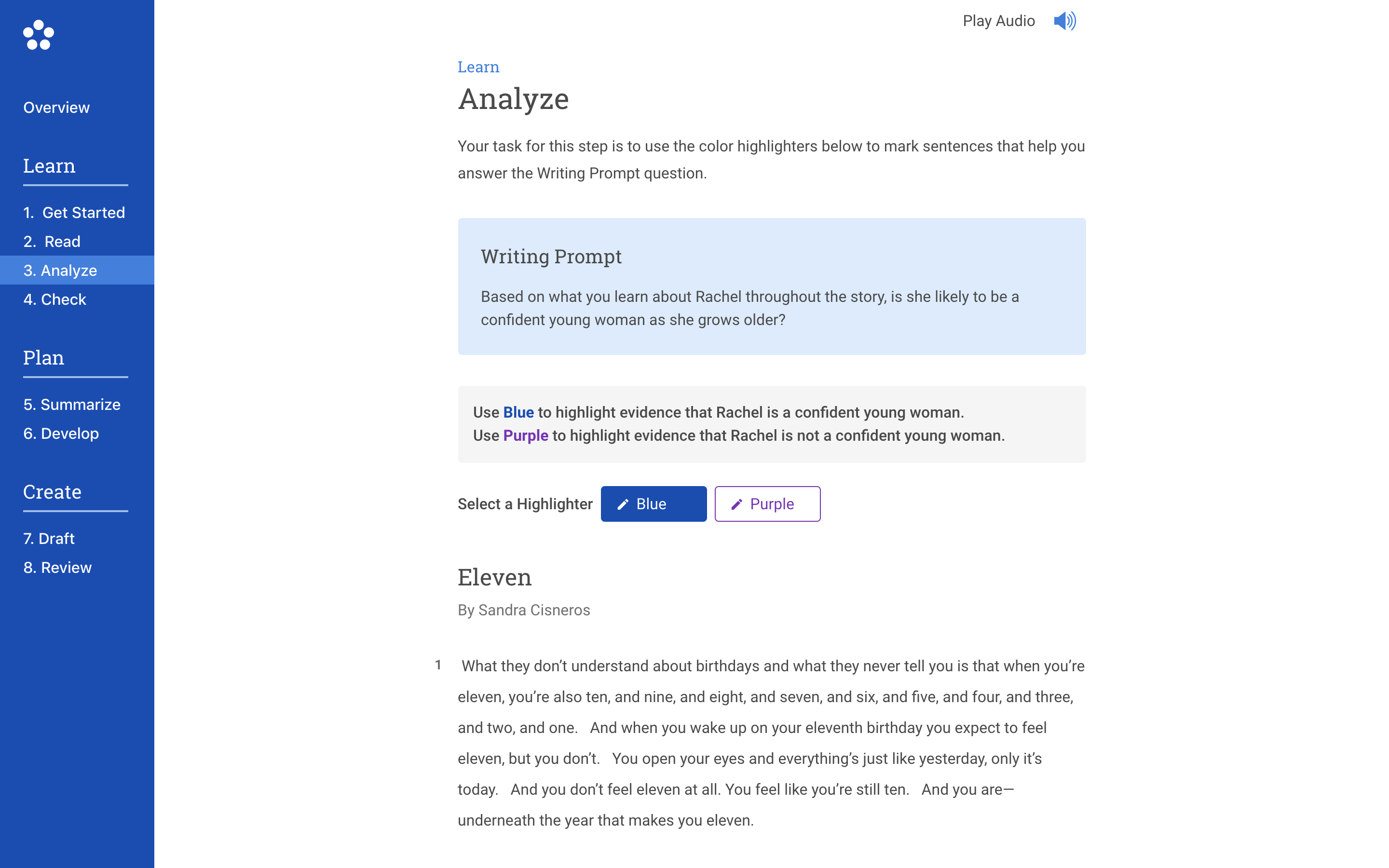
- Check:
The five-question multiple choice comprehension check assesses students’ understanding of the text. The questions focus on the central idea, comprehension, and vocabulary
Students can work independently or collaboratively on the multiple choice questions.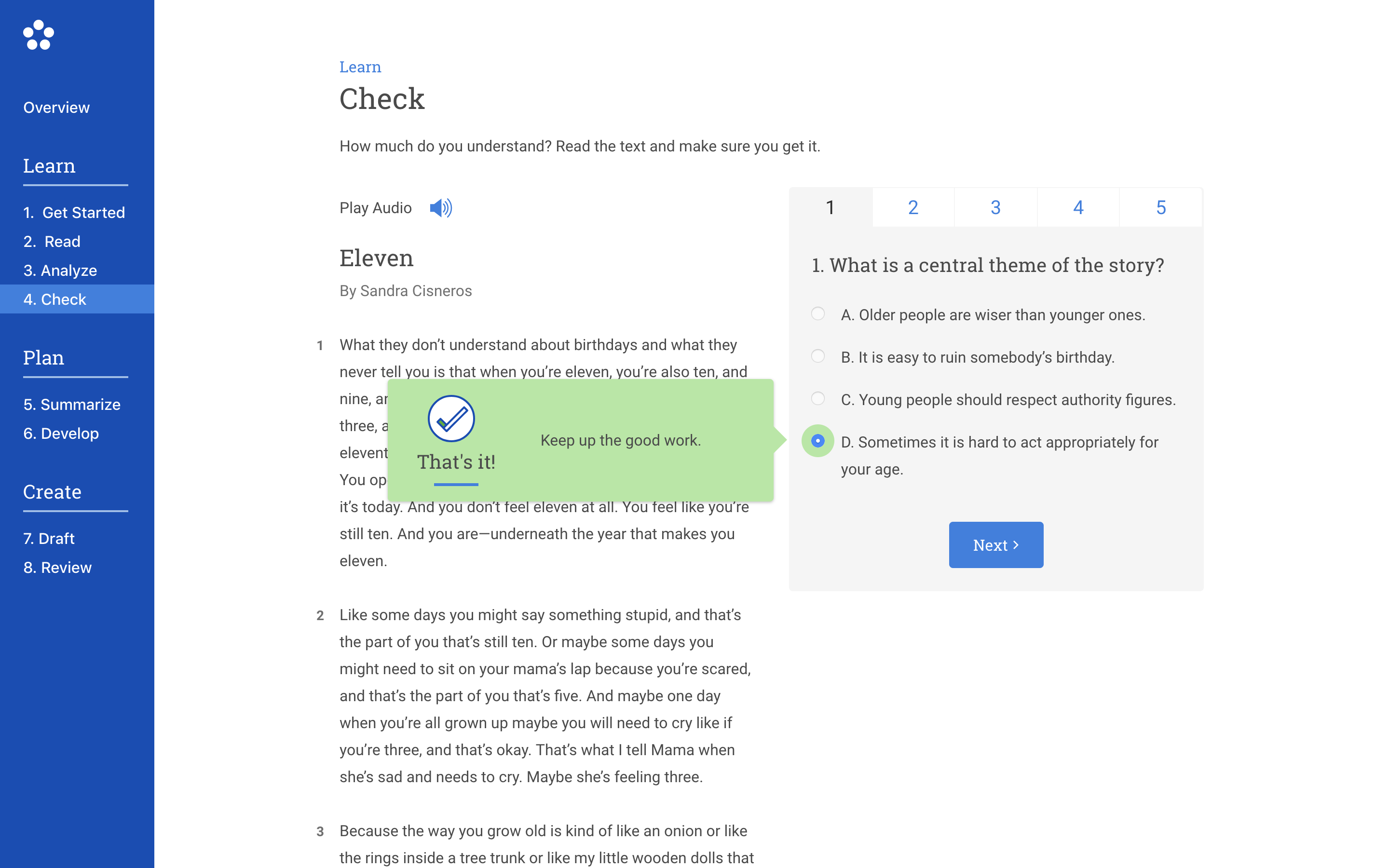
- Summarize:
The Writing Lesson’s second set of steps focuses on planning the piece of writing. The summarizing steps asks students to summarize the text. Sentence starters are provided on the right hand side of the screen. The sentence starters can be used to incorporate academic language as well as organize the summary.
The summarize step of the lesson can be completed independently or collaboratively by students. A turn and talk can also be used to foster collaboration and speaking and listening skills.
- Develop:
The Develop step is an interactive graphic organizer. The organizer helps students develop and organize the critical components of the formal piece of writing. Sentence starters are available for each component. This graphic organizer is stored and accessible for the final writing step.
Students can develop their writing components. Then, working with a partner, discuss their reasons, evidence, and reasoning.
After students develop their writing, it is recommended that students participate in a class discussion. This will bring all levels of learners together around the class discussion question for the Writing Module. This will help students develop their arguments and consider additional perspectives.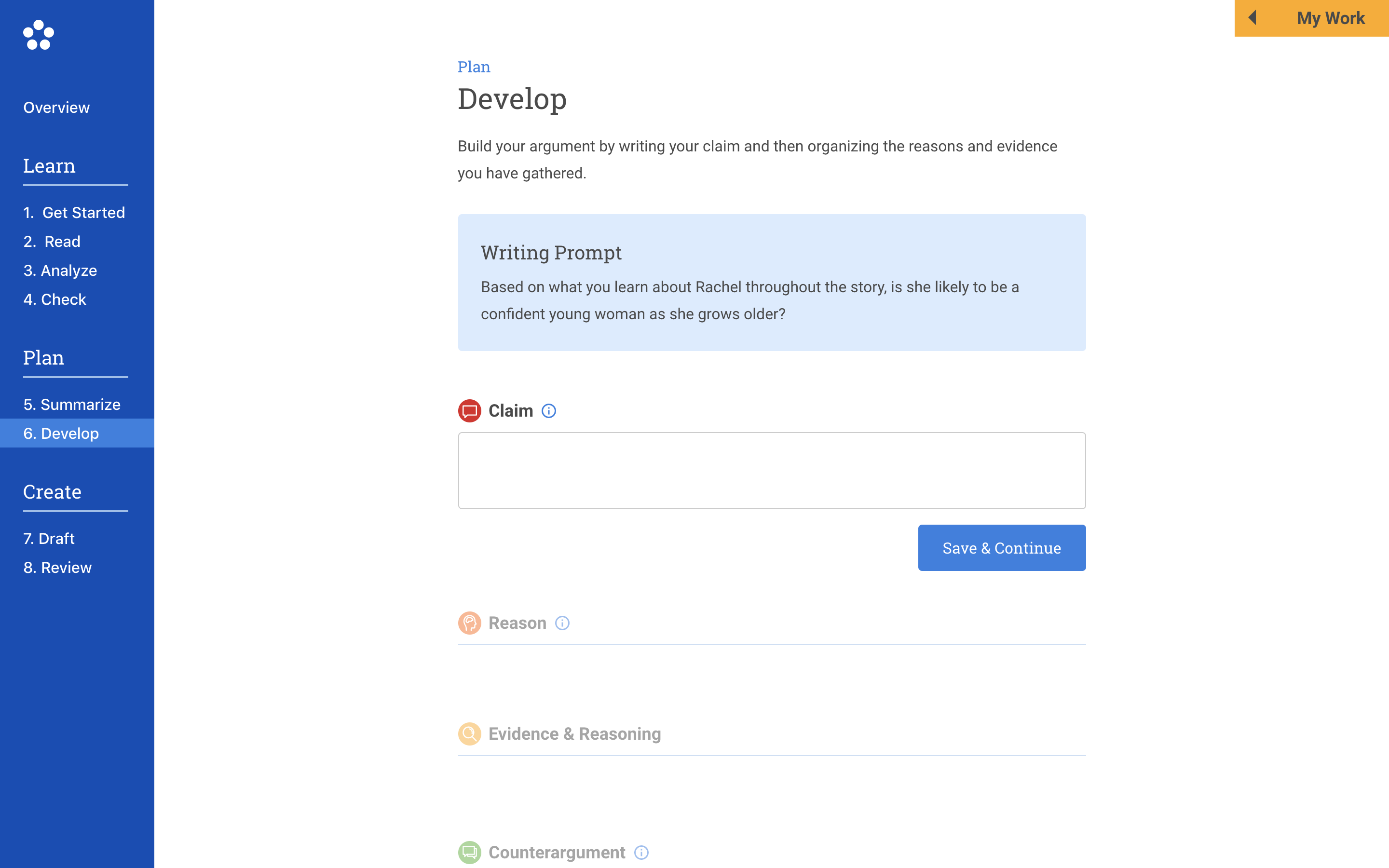
- Draft:
The Draft Step supports students in writing a well-organized first draft of their writing. Students can access the text and their work from previous steps of the Writing Lesson. Included is a reminder of how a formal writing piece is organized with an introduction, body, and conclusion. Students are then asked to check their work with reminders that align to the standards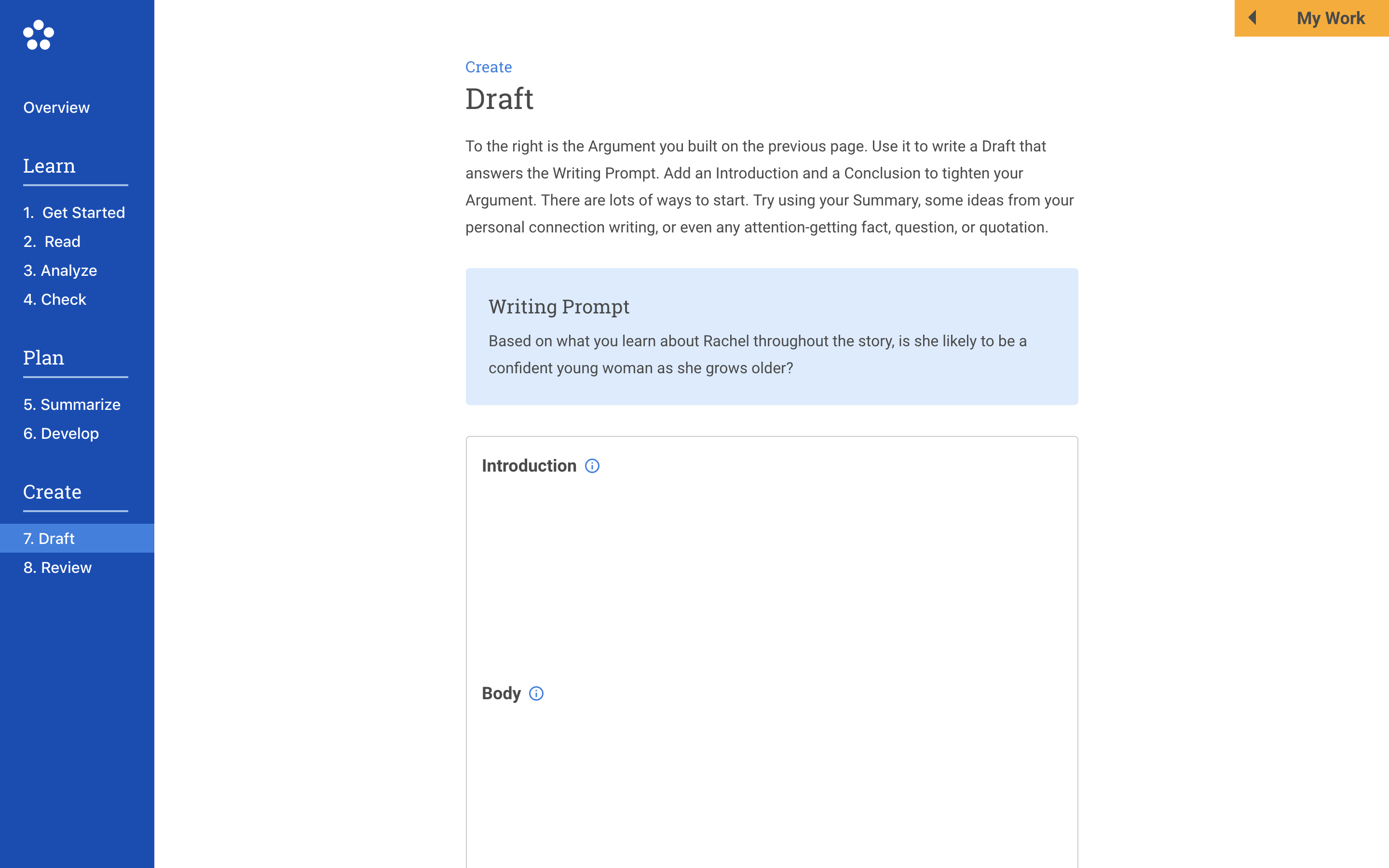
- Review:
Finally, the Review Step allows students to review and revise their work before submitting their formal writing to the teacher. A full writing checklist, which is aligned to the standards-based rubric, can be viewed to support students in their revisions.